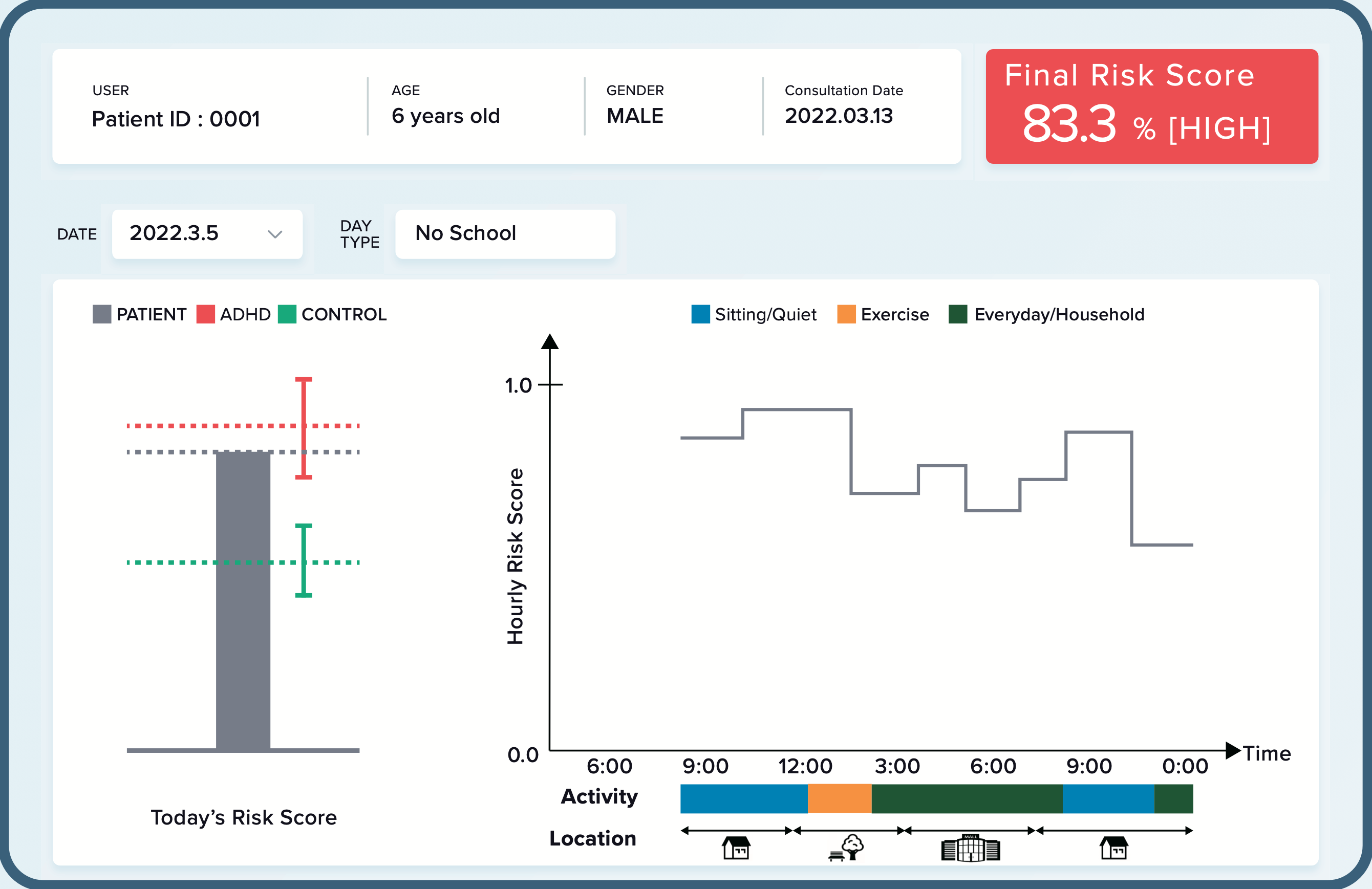LemurDx: Using Unconstrained Passive Sensing for an Objective Measurement of Hyperactivity in Children with no Parent Input

Hyperactivity is the most dominant presentation of Attention-Deficit/Hyperactivity Disorder in young children. Currently, measuring hyperactivity involves parents’ or teachers’ reports. These reports are vulnerable to subjectivity and can lead to misdiagnosis. LemurDx provides an objective measure of hyperactivity using passive mobile sensing. We collected data from 61 children (25 with hyperactivity) who wore a smartwatch for up to 7 days without changing their daily routine. The participants’ parents maintained a log of the child’s activities at a half-hour granularity (e.g., sitting, exercising) as contextual information. Our ML models achieved 85.2% accuracy in detecting hyperactivity in children (using parent-provided activity labels). We also built models that estimated children’s context from the sensor data and did not rely on activity labels to reduce parent burden. These models achieved 82.0% accuracy in detecting hyperactivity. In addition, we interviewed five clinicians who suggested a need for a tractable risk score that enables analysis of a child’s behavior across contexts. Our results show the feasibility of supporting the diagnosis of hyperactivity by providing clinicians with an interpretable and objective score of hyperactivity using off-the-shelf watches and adding no constraints to children or their guardians.
Citation
Riku Arakawa, Karan Ahuja, Kristie Mak, Gwendolyn Thompson, Sam Shaaban, Oliver Lindhiem, and Mayank Goel. 2023. LemurDx: Using Unconstrained Passive Sensing for an Objective Measurement of Hyperactivity in Children with no Parent Input. Proc. ACM Interact. Mob. Wearable Ubiquitous Technol. 7, 2, Article 46 (June 2023), 23 pages.